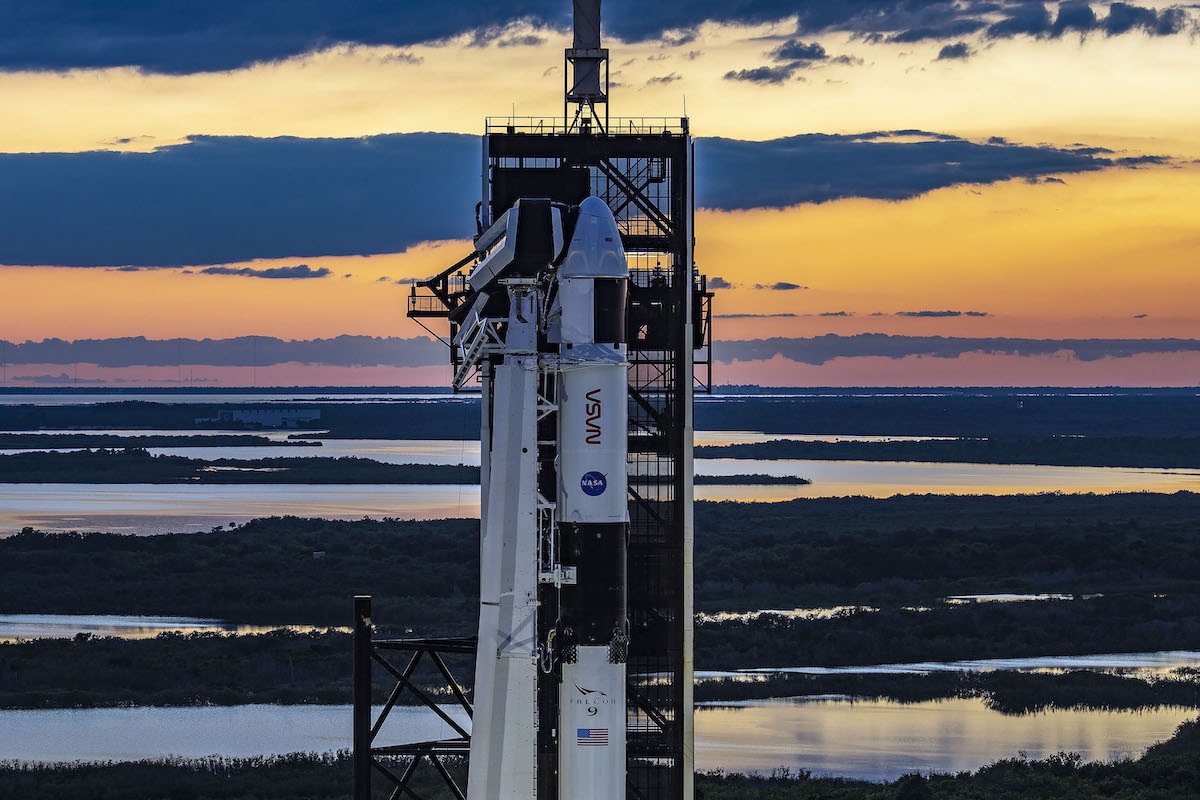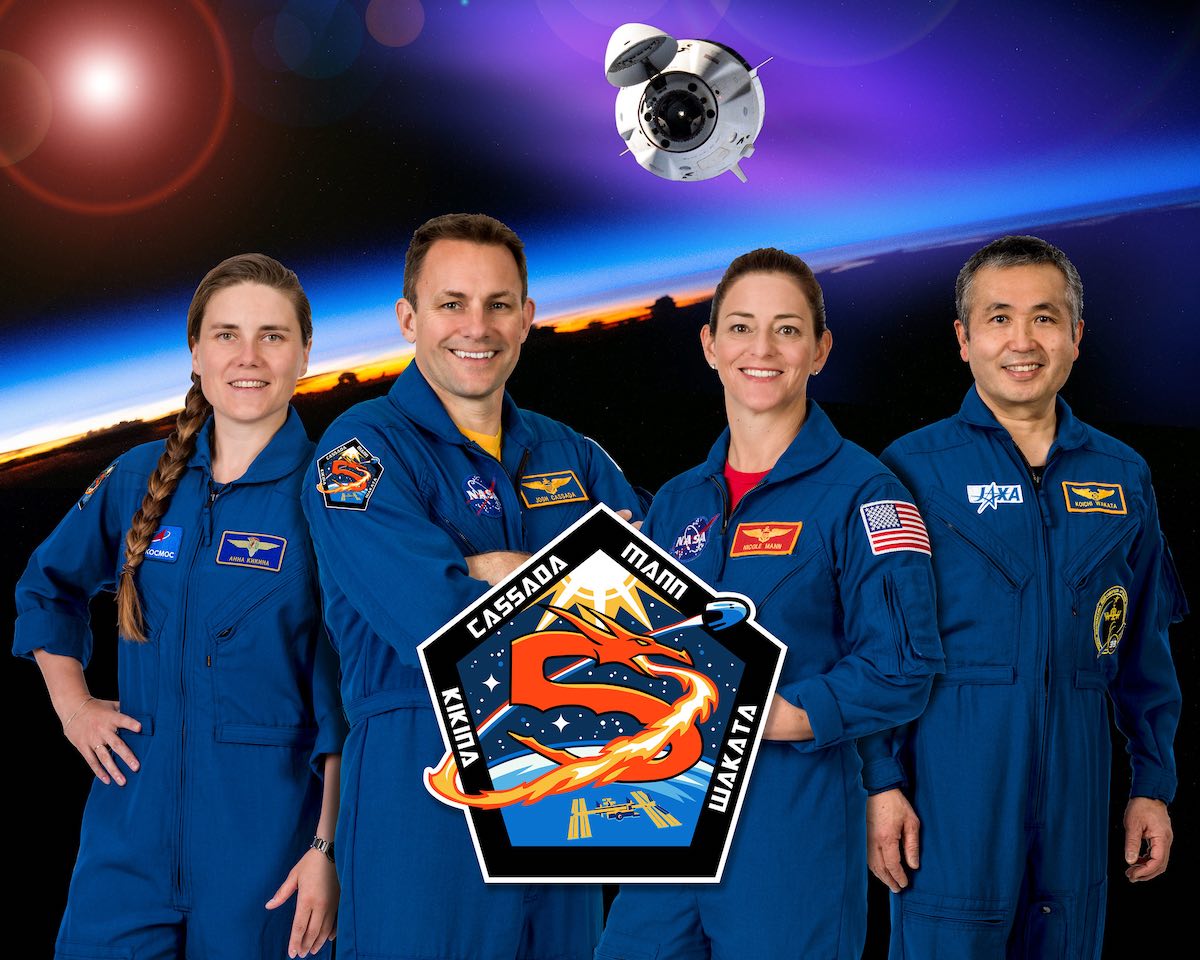EDITOR’S NOTE: Updated Oct. 4 with additional delay to Starlink launch from California.

SpaceX’s next astronaut launch for NASA, set for Wednesday from Kennedy Space Center, is one of three missions on the company’s schedule this week from launch pads in Florida and California. The crew mission will get top priority, a SpaceX official said, as managers watch downrange sea conditions and technicians try to resolve final technical issues before liftoff.
Steve Stich, NASA’s commercial crew program manager, said Monday night that the launch readiness review for Crew-5 was completed and teams are proceeding toward a launch attempt Wednesday at 12 p.m. EDT (1600 GMT). An automated docking at the space station’s Harmony module would occur about 29 hours later at 4:57 p.m. EDT (2057 GMT) Thursday.
The mission, known as Crew-5, will ferry the next four-person crew to the International Space Station. The crew will ride into orbit aboard a SpaceX Falcon 9 rocket and the Dragon Endurance spacecraft.
Benji Reed, SpaceX’s senior director of human spaceflight programs, said Monday night that none of the technical issues appear to be showstoppers standing in the way of the Crew-5 launch.
One issue involves the drone ship “Just Read the Instructions” in the Atlantic Ocean. The drone ship is having communication issues, causing difficulty operating the high-power system needed to drive the vessel toward the landing site for the Falcon 9’s first stage booster. The ship uses station-keeping engines to hold position at the landing zone.
Teams also planned to swap out a thrust vector control actuator overnight Tuesday in the steering system on one of the first stage engines on the Falcon 9. The actuator showed an unexpected reading during a static fire test on the launch pad Sunday.
And technicians are working to resolve a potential leak in a quick-disconnect fitting associated with a portable fire extinguisher inside SpaceX’s Dragon Endurance spacecraft. Reed said teams will replace the fitting to repair the fire extinguisher.
The Crew-5 launch is one of three Falcon 9 rocket flights on tap for this week.
Another Falcon 9 rocket is awaiting liftoff from Vandenberg Space Force Base in California with SpaceX’s next batch of 52 Starlink internet satellites. A few miles south of pad 39A, teams at pad 40 at Cape Canaveral Space Force Station are preparing a Falcon 9 rocket for launch Thursday evening with two Intelsat geostationary communications satellites.
“It’s a particularly busy week here at SpaceX. Right now, we have three separate teams preparing for three launches from three different pads in less than three days. Starlink is now targeting Tuesday, Oct. 4, from the launch site here in California,” Reed said Monday. “Originally, we were targeting today, but we’re allowing more time for pre-launch checkouts.”
On Tuesday, SpaceX officials pushed back the Starlink launch from California to no earlier than Wednesday at 4:10 p.m. PDT (7:10 p.m. EDT; 2310 GMT) to give priority to the Crew-5 launch in Florida. The Starlink launch will go ahead Wednesday evening only if the Crew-5 mission blasts off earlier in the day.
Stich, NASA’s commercial crew program manager, said agency officials want to review data on the performance of previous Falcon 9 rockets before giving the “go” for a crew launch. He said NASA needs about two days for the data review. The data analysis could have been completed in time for a Wednesday launch of Crew-5 if the Starlink launch took off Monday, as originally scheduled.
“It’s important to note that different teams are working on each of these launches, and we’re ensuring that our teams will all be well rested,” Reed said Monday night. “Also, I want to point out that if Crew-5 stays on track for Wednesday, for the 5th, we will stand down from tomorrow’s launch attempt for the Starlink mission so teams can focus completely on Crew-5 and review the data needed. As always, flying the crew is our top priority, and crew safety is our top priority.”
That’s exactly what happened Tuesday, when SpaceX decided to call off the Falcon 9 launch attempt in California and delay it until after the Crew-5 launch Wednesday.
United Launch Alliance, a SpaceX rival in the U.S. launch industry, adds to the jam-packed launch schedule with the planned liftoff of an Atlas 5 rocket Tuesday from pad 41 at Cape Canaveral Space Force Station, about 2 miles south of SpaceX’s Crew-5 launch site at pad 39A. The Atlas 5 rocket will deploy two commercial TV broadcasting satellites into geosynchronous orbit for SES.

Nicole Mann, a Marine Corps colonel and former F/A-18 test pilot, will command the Crew-5 mission. She will be the first woman to command a mission on a Dragon spacecraft. Josh Cassada, a Navy captain and pilot with a doctorate in physics, will fly in the pilot’s seat inside the Dragon Endurance spacecraft. Mann and Cassada are rookie astronauts.
Veteran Japanese astronaut Koichi Wakata will serve as a mission specialist on the Dragon Endurance spacecraft, and as a flight engineer after arriving at the space station. Wakata is launching on his fifth trip to space, following prior launches on NASA’s space shuttle and Russian Soyuz spacecraft. The Falcon 9 and Dragon will be the third type of vehicle Wakata has flown into space.
Russian cosmonaut Anna Kikina, another first-time space flier, rounds out the crew. She is the first Russian to fly on a Dragon spacecraft, and the first Russian cosmonaut to launch on a U.S. rocket since 2002.
Kikina was confirmed as the fourth crew member in July, when NASA and the Russian space agency, Roscosmos, finalized a “seat swap” agreement enabling Russian cosmonauts to launch and land on U.S. crew capsules and U.S. astronauts to fly to the space station on Russian Soyuz missions.
The seat sharing agreement is intended to ensure the space station is always staffed by at least one U.S. and one Russian crew member, allowing each country’s segment of the complex to remain fully operational even if there was a major problem or delay in U.S. or Russian crew launches.
Mann, Cassada, Wakata, and Kikina will spend about five months on the International Space Station. The outgoing Crew-4 astronauts, who have been on the station since April, will depart the complex in SpaceX’s Dragon Freedom spacecraft and head for splashdown off the coast of Florida around five or six days after arrival of the Crew-5 mission.
Email the author.
Follow Stephen Clark on Twitter: @StephenClark1.
